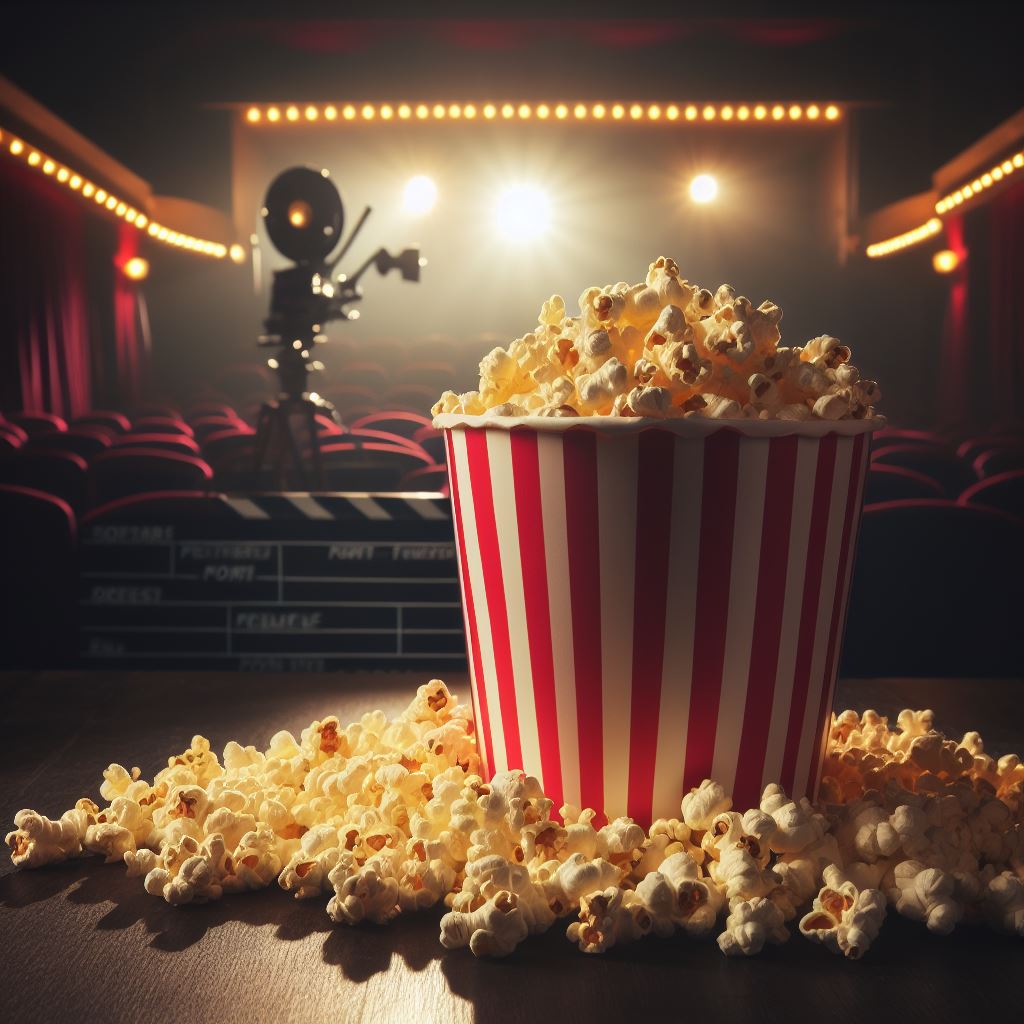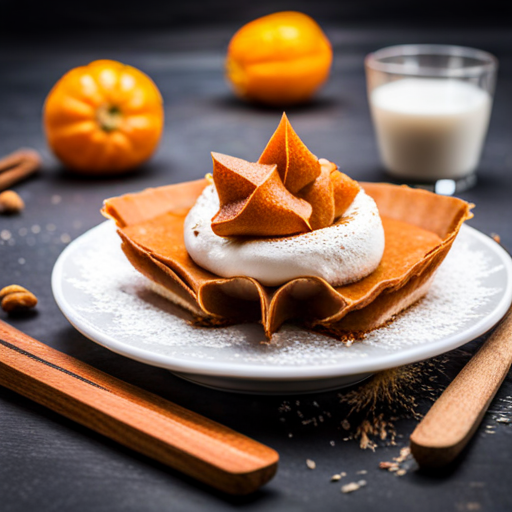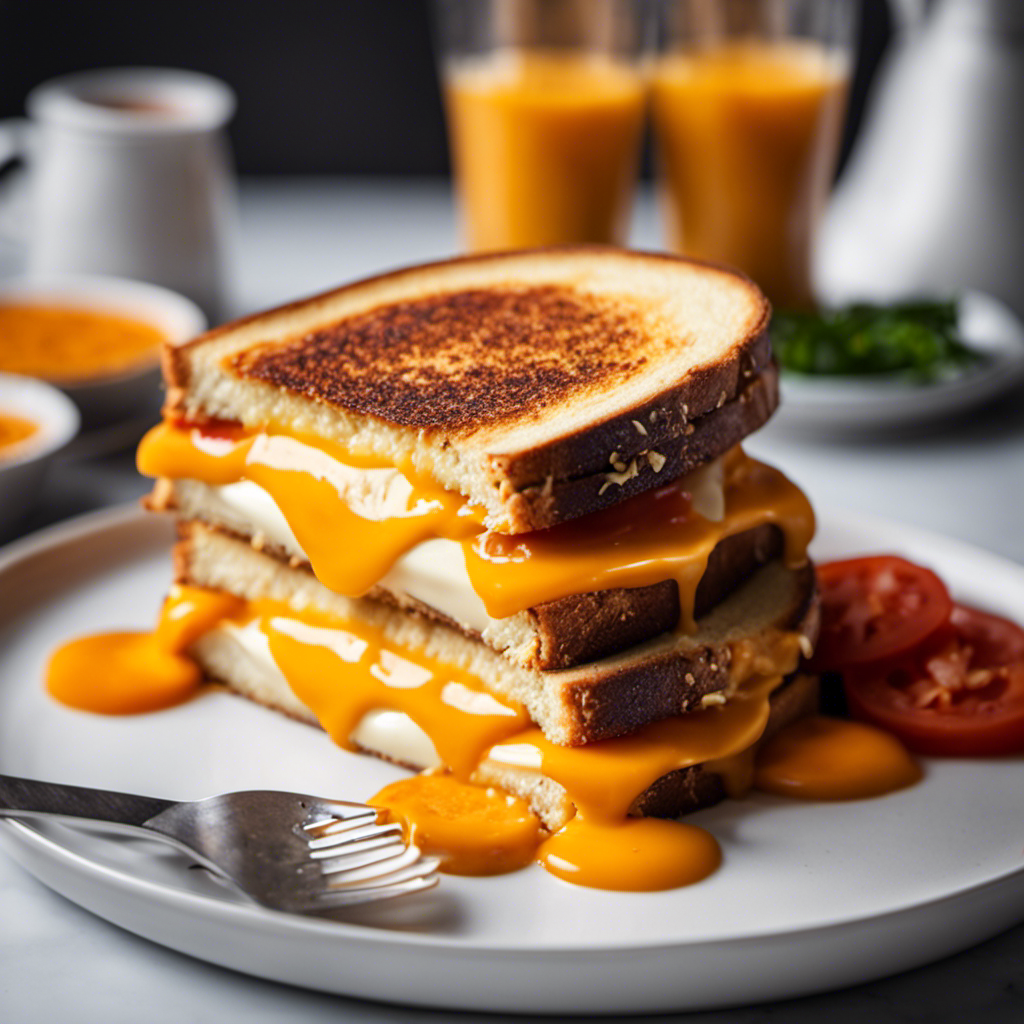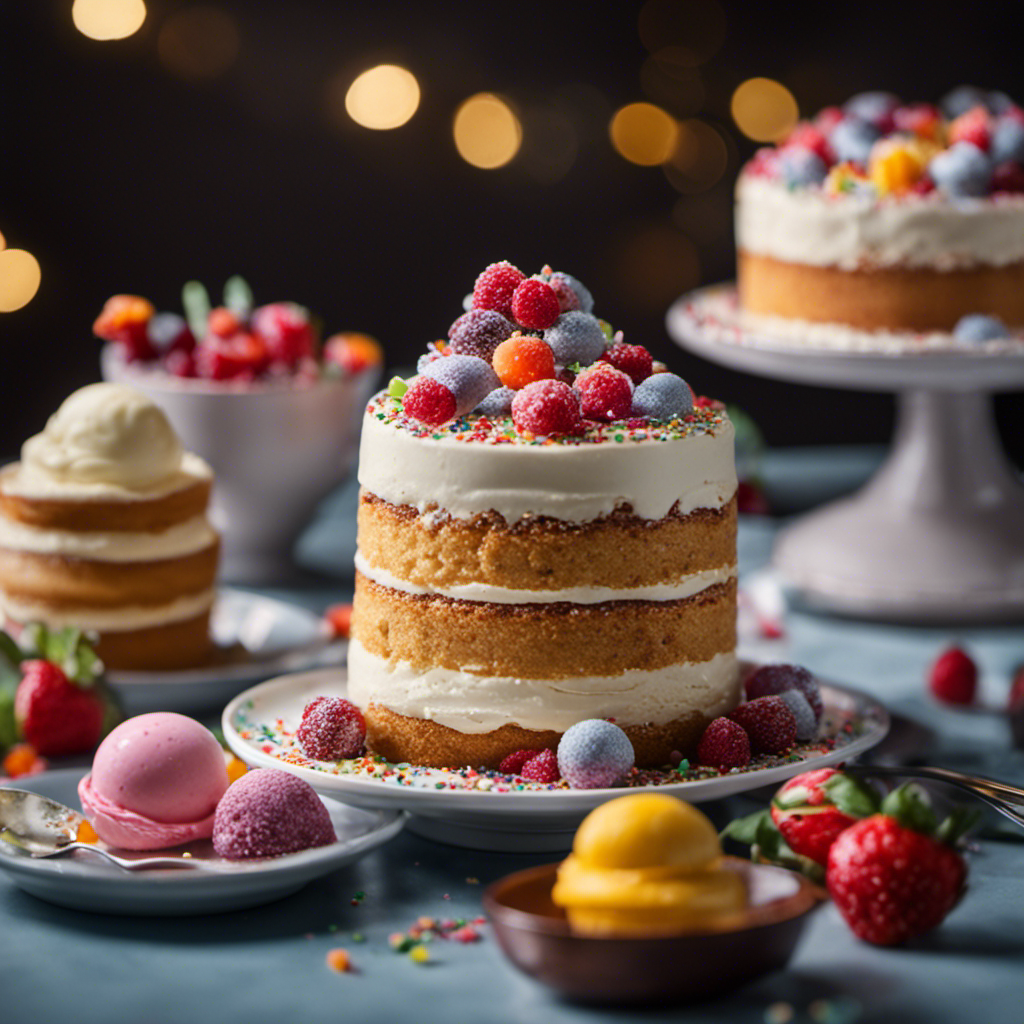Introduction
Fun facts about popcorn – this fluffy snack has a popping history! From its ancient origins to its steamy science, popcorn is full of surprises. This crunchy treat has captivated cultures for centuries. Get ready to digest delightful trivia and tidbits about popcorn’s storied popcorn past.
Popcorn’s Popularity Through the Ages
Popcorn is truly a timeless snack. This fluffy, crunchy treat has been beloved for thousands of years across cultures. In fact, archaeologists have discovered remnants of popcorn that date back over 6,000 years!
As one of the most iconic movie snacks, popcorn continues to captivate us today. But there’s more to this snack than meets the eye. Popcorn offers surprising health benefits, cultural history, and science behind its signature pop.
Join us on a journey through the fascinating fun facts about everyone’s favorite popped corn. We’ll explore popcorn’s origins, nutritional value, and role in media. You may never look at this fluffy snack the same way again!
First, let’s understand the basics. Popcorn comes from a special variety of maize (corn). Its signature explosion happens when internal moisture heated by fire or oil reaches a high enough pressure. This causes the kernel to flip inside out, into that recognizable snow-white puff we know and love.
Archaeologists found popcorn remnants in Mexico dating back to 3600 BC. Various forms of popcorn-on-the-cob were consumed by Native American tribes for thousands of years. In fact, its name comes from the Aztec word “popocatlt”, meaning exploding corn.
Popcorn cultivation spread northward, and began gaining popularity at the start of the 19th century. Vendors would pop large batches over fires and sell this tasty street snack. Home popping also became popular with wire “poppers” invented in the 1850s.
Movie theaters helped catapult popcorn into a cultural symbol starting in the 1890s. Immigrant vendors like Charles Cretors developed commercial poppers that could produce popcorn in bulk. Movie theaters saw popcorn as an inexpensive snack to keep audiences happy… and the rest is history!
![Fun Facts About Popcorn: Ultimate List of Surprising History & Trivia [Snack Tips to Know Now!]](https://factnight.com/wp-content/uploads/2023/11/Fun-Facts-About-Popcorn-Ultimate-List-of-Surprising-History-Trivia-Snack-Tips-to-Know-Now.jpeg)
Popcorn continues to be a quintessential treat at cinemas, ball games, fairs, and homes today. Americans consume over 17 billion quarts per year!
Let’s dig deeper into the surprising perks and science behind this iconic snack.
Fun Facts About How Popcorn Pops
The Science Behind Popping
Now that we’ve covered popcorn’s fascinating history, let’s explore what makes this incredible transformation from kernel to fluffy treat possible.
The secret lies in popcorn’s special internal structure. Each kernel contains a small drop of water stored inside a circle of soft starch. This starch is surrounded by the kernel’s hard outer hull.
As the kernel is heated, the water begins to expand. The strong hull prevents the steam from escaping. Pressure builds until the hull ruptures with a signature “pop!” The soft starch inside gets blasted into a fluffy puff while the hull inverts itself outward.
This rapid explosion causes popcorn to increase 30-40 times in volume within a fraction of a second! The average kernel can reach up to 2-3 inches in diameter.
Key factors like moisture, variety, and heating method impact popping success. Ideal popcorn has a moisture content around 13-14%. Kernels that are too dry may not pop at all.
Oil content also varies. Some types like butter flavor have an oil-rich germ that helps fuel the explosion. Higher oil leads to a crispier, crunchier texture.
Interesting Details About the Explosion
That satisfying “pop” reaches volumes up to 115 decibels! This exceeds noise levels of a typical vacuum cleaner.
Popping requires temperatures between 347-465°F to create enough steam pressure. But not all kernels pop at once. As heat spreads unevenly, the explosions cascade one by one.
Kernels that don’t pop right away often require a second burst of heat to kickstart the process. This leads to that characteristic rhythm of multiple “pops” from a single batch.
Impact of Corn Varieties
The type of corn strongly impacts popping success. Pointy, firm dent corn kernels are ideal. Their hard outer hull withstands the mounting internal pressure.
Flint corn also pops well since their kernels are small and rounded. But soft starch varieties like flour corn lack the structural integrity to pop effectively.
Interestingly, color doesn’t affect popping – yellow, white, blue, or multicolored corn can all transform into delicious popped snacks with the right structure.
Now that you understand the exploded science behind this beloved snack, let’s uncover more captivating fun facts!
Popcorn’s History and Origins
Native American Origins
Popcorn’s origins can be traced all the way back to ancient Mesoamerica. The oldest ears of popcorn ever found were discovered in Mexico’s Bat Cave and dated around 3600 BC.
For thousands of years, various Native American groups like the Zapotec cultivated and consumed corn in all its forms, including popcorn-on-the-cob. The Aztecs honored popcorn as one of the main staples of their diet.
In fact, the word “popcorn” comes from the Nahuatl (Aztec language) word “popocatlt”, literally meaning “exploding corn”. They revered its ability to “turn inside out” when heated.
Native tribes all over North, Central, and South America relished this unique snack. They passed down traditional popcorn preparation techniques like corn parching and cooking in earthenware pots.
This early form of popcorn was an important part of ceremonies, festivities, and daily nourishment in many indigenous cultures. They prepared it with herbs, spices, fats, and salt for flavor.
Spreading Popcorn’s Popularity
As European colonists and settlers arrived in the Americas in the 16th century, they discovered and quickly took a liking to this popped corn snack. They learned about drying, storing, and cooking techniques from Native tribes.
By the early 1800s, popcorn cultivation spread northward into what became the Midwestern United States. Vendors first commercialized it by selling popped popcorn at markets, fairs, and street corners in major cities.
Home popping rose in popularity in the mid-1800s as wire “popper toys” allowed families to create this fun snack themselves. Cookbooks began including popcorn recipes around this time too.
Important New World Crop
In addition to being relished as a novel snack, popcorn became an agriculturally and economically important crop in the Americas.
Its quick growing time, high yield, and hearty nature made popcorn well-suited for cultivation in this region. It thrived and provided a new staple food source.
As the snack market expanded, popcorn farming and sales steadily grew throughout the 1800s and early 1900s. The popcorn industry was born.
Today, the countries that grow the most popcorn globally are the USA, Argentina, and Brazil. Productivity has skyrocketed to meet high demand for this iconic snack!
Popcorn Today
Evolution into an Iconic Snack
Popcorn’s meteoric rise from ancient native food to beloved snack treat is truly remarkable. Today, Americans consume over 17 billion quarts of popped popcorn annually!
Several key innovations in the 1800s and 1900s helped catapult popcorn into iconic snack status. The invention of steam-powered popcorn makers allowed vendors to reliably mass produce popped corn to meet public demand at fairs and theaters.
Movie theaters especially boosted popcorn’s popularity in the early 1900s. Affordable and filling, popcorn allowed theaters to delight crowds and increase concessions revenue. Its conspicuous aroma, enticing crunch, and lack of distraction made popcorn the perfect snack to munch during films.
Product innovations also expanded accessibility and home enjoyment of popcorn. Around 1911, the first packaged, ready-to-eat popcorn hit store shelves. In the 1930s, DuPont scientist Roy Park discovered that adding oil to the kernel mix improved popping. This breakthrough led to the development of shelf-stable, pre-packaged microwave popcorn in the 1950s.
Popcorn Consumption Today
Popcorn continues to be one of the most beloved snack foods today. Over 13 billion pounds are consumed annually in the United States alone. That’s 43 quarts per person per year!
In terms of volume, almost all popcorn is eaten at home. But of popcorn sales, about 80% are for movie theater popcorn. Its nostalgic appeal keeps fans coming back for that authentic experience.
Popcorn is also increasingly praised for its health benefits and variety of flavors. Sales of gourmet popcorn in particular grew 26% from 2020-2021.
Preparation Methods
There are several ways we can enjoy popcorn today:
- Microwave popcorn provides quick at-home preparation. Pre-packaged bags have been optimized for microwave popping.
- Air poppers use hot air circulation to pop kernels, producing lower calorie popcorn without any oil. Great for purists.
- Stovetop popping in oil or butter allows seasoning and flavor control. Pot with lid doubles as the popper.
- Commercial poppers like those in movie theaters use pro-grade stainless steel kettles to continually pop large volumes of delicious popcorn.
Regardless of popping method, popcorn remains a beloved food that transcends age, taste, and culture. This ancient snack continues to be a staple treat thanks to its irresistible taste, poppin’ fun, and versatility.
Nutrition and Health Benefits of Popcorn
Nutritional Profile
Popcorn may seem like an indulgent treat, but it actually offers some powerful nutritional benefits when prepared properly.
Air-popped popcorn delivers a solid dose of fiber – around 4 grams per 3 cups. The whole grain provides nearly 15% of our daily fiber needs. The hull is one of the most fiber-rich parts, so hull-on popcorn is ideal.
Popcorn also contains various vitamins and minerals. High levels of polyphenols, carotenoids like lutein and zeaxanthin, and the antioxidant vitamin E give popcorn free-radical fighting power. Essential minerals like magnesium, selenium, thiamine, folate, and iron are present too.
Potential Health Benefits
The unique nutritional makeup of popcorn may impart several health advantages:
- The high fiber content benefits digestion and heart health by lowering cholesterol and regulating blood sugar. The hull’s insoluble fiber aids regularity.
- Antioxidants like polyphenols help fight disease-causing inflammation and cell damage in the body.
- Lutein and zeaxanthin promote eye health and lower risks of macular degeneration and cataracts.
- Magnesium supports bone strength, muscle and nerve function, immunity, sleep, and more.
Overall, popcorn delivers a nutritious, low-calorie whole grain option compared to many other empty-calorie snack foods.
Tips for Healthy Preparation
To maximize the health benefits of popcorn, consider these tips:
- Air-pop for lowest calories and fat.
- Avoid extra butter and oils to limit saturated fats.
- Skip caramel or cheese coatings – they pile on sugar and fat.
- Flavor with herbs and spices like garlic powder, cinnamon, paprika, etc.
- Watch portions. 3 cups air-popped offers health perks without overdoing calories.
Popcorn can be healthy and delicious with mindful preparation. This light, whole-grain snack bursting with fiber will make you feel good while pleasing your taste buds.
Fun Popcorn Varieties and Flavors

Classic Flavors
When you think of popcorn, you probably picture that classic freshly popped treat doused in melted butter and sprinkled with salt. This tasty combo has been the benchmark snack for decades.
The rich, velvety flavor of butter perfectly complements popcorn’s crunchy, starchy bite. Meanwhile, the salt enhances the sweetness of the corn and balances the fat of the butter.
This deliciously indulgent recipe will never go out of style. But let’s explore some other flavor adventures!
Gourmet Varieties
In recent years, gourmet popcorn has taken off as foodies and entrepreneurs invent new flavor varieties.
Kettle corn offers a sweet and salty twist, with the corn caramelized in oil and sugar before being dusted in salt.
Caramel corn doubles down on the sweet factor, coating popped corn in gooey caramel for an irresistible treat.
Cheese corn satisfies savory cravings by tossing hot popcorn with cheese powders like cheddar, nacho cheese, or Parmesan.
Even flavors like jalapeño, chocolate, raspberry, pickle, and curry exist for the truly adventurous snackers out there!
Inventive Flavor Combos
Don’t be afraid to get creative with seasoning your own popcorn to suit your tastes. Sweet, spicy, herby – the possibilities are endless!
Consider drizzles like chocolate, caramel, or honey for sweetness. Powdered sugar is a simple topping too.
For savory goodness, add garlic powder, nutritional yeast, cayenne pepper, paprika, onion powder, ranch seasoning, or grated Parmesan cheese.
Fruity options include lemon juice and zest, lime juice, fresh berries, or powdered fruit flavors.
So next time you pop up a fresh batch, experiment with new flavors! This versatile snack is the perfect canvas for your wildest seasonings and palette pleasures.
Popcorn in Media and Culture
Popcorn and Entertainment
It’s impossible to think about popcorn without its close association with movies and entertainment. This link started in the early 1900s when movie theaters began selling popcorn to crowds.
Popcorn quickly became a quintessential movie snack. Its enticing smell, crunchy bite, and ability to be eaten in the dark made it the perfect treat. Plus, popcorn was inexpensive, allowing theaters to turn huge profits on concessions.
The ritual of fresh popcorn at the movies continues today. In fact, about 80% of popcorn sales are at movie theaters. That irresistible aroma lures us in!
Of course, popcorn is also a staple at home for family movie nights. Its beloved status in media and entertainment is here to stay.
Popcorn in Books, Music, and Film
As an iconic food, it’s no surprise popcorn has made many memorable appearances in books, songs, TV, and movies over the years.
In children’s books, the Popcorn Book Series by Tomie dePaola follows a family making and eating popcorn. Popcorn also stars in the anime film Popcorn Monkey Tiger and novel Popcorn by Ben Elton.
Popcorn even has its own song – “Popcorn” by Gershon Kingsley. More songs reference popcorn in lyrics, like “Shake Your Popcorn” by Scotty & His Popcorn Playboys.
In film, the comedy Popcorn parodies horror B-movies. More recently, a pivotal dance scene in Napoleon Dynamite cemented popcorn’s role in pop culture.
Cultural Traditions
Popcorn is ingrained in many cultural and regional traditions. In the Midwest U.S., “Corn Polka” festivals celebrate popcorn heritage with music, dancing, and art.
During Christmas, decorating Christmas trees with popcorn garland is a beloved ritual. For New Year’s Eve, families may munch popcorn while watching celebratory specials.
In Boy Scouts, Camp Fire, and other youth groups, popcorn fundraisers allow kids to sell popcorn to support their activities.
Clearly, this snack holds a special place in our hearts and cultural traditions. Popcorn weaves through our lives in more ways than one!
Popcorn Statistics and Records
Popcorn Records
Popcorn’s beloved status has led to some fascinating records and competitions centered around this iconic snack:
- In 2012, a world record for largest popcorn kernel was set in Florida with a kernel measuring 1.5 inches across.
- The most popcorn popped in one hour by a team is 3,697 pounds, achieved in Indiana in 2010.
- Competitive eaters can down nearly 30 cups in 10 minutes. Joey Chestnut holds the world record, eating 28.75 cups in 2020.
- The largest popcorn ball ever was 12 feet in diameter, weighing 3,415 pounds. It was created in Florida in 2016.
- Popcorn sculptures have also reached record sizes – the world’s largest popcorn sculpture was a Mount Rushmore replica measuring 27 feet tall.
Fun Consumption Statistics
Let’s explore some fun facts showcasing popcorn’s popularity:
- Americans consume over 17 billion quarts of popcorn per year.
- Movie theaters sell around 5 billion quarts annually.
- The average American eats about 68 quarts per year.
- The peak popcorn sales seasons are fall and winter holidays.
- 97% of Americans have popcorn in their homes.
Clearly, we’re a nation obsessed with this crunchy, fluffy snack!
Industry Fun Facts
The popcorn industry itself holds some interesting statistics:
- The top popcorn producing states are Indiana, Nebraska, and Illinois.
- The USA supplies nearly half of the world’s popcorn.
- Annual popcorn sales top $10 billion globally.
- The average popcorn farmer’s yield is about 4,150 pounds per acre.
- Kernel to popcorn expansion during popping results in a 40-fold increase in volume.
The popcorn market continues to thrive both domestically and worldwide thanks to this snack’s broad appeal and passionate fanbase.
Conclusion
Recap of Fascinating Facts
What an enlightening journey through the captivating world of popcorn! To recap, here are some of the most fascinating tidbits we uncovered:
- Archaeologists found 5,600-year-old popcorn remnants in Mexico’s Bat Cave.
- The word “popcorn” comes from the Aztec word “popocatlt” meaning “exploding corn.”
- Popcorn increases 30-40 times in volume during the popping process.
- Popcorn pops at temperatures between 347-465°F. The hull rupture causes a signature “pop!”
- Today, Americans eat over 17 billion quarts of popcorn annually.
- Air-popped popcorn delivers nearly 15% of daily fiber needs in a 3-cup serving.
- Popcorn is high in beneficial antioxidants like polyphenols, lutein, and zeaxanthin.
Clearly popcorn offers much more than just yummy taste – this incredible snack boasts a rich history, cool science, impressive nutrition, and enduring popularity.
Popcorn Trivia
Let’s test your new popcorn knowledge with some trivia:
- Which ancient civilization first started cultivating popcorn?
- About how many times does a popcorn kernel increase in volume when it pops?
- Which vitamin found in popcorn benefits eye health?
- What country produces the most popcorn worldwide today?
- How did popcorn first become popular in movie theaters in the early 1900s?
Enjoy Popcorn Mindfully
Armed with all these fun facts about popcorn, the next time you pop up a batch, consider doing so a little more mindfully.
Savor the aroma, appreciate the thousands of years of history behind this incredible snack, and marvel at the scientific “explosion” happening within each kernel.
Plus, feel good knowing that plain air-popped popcorn can actually offer nutritional benefits! Popcorn gifts us so much more than just delicious taste. Enjoy every bite!
Fun Facts About Popcorn -Frequently Asked Question
Popcorn is one of the world’s most beloved snacks. But there’s a lot more to this fluffy treat than meets the eye! Get answers to the most frequently asked questions about fascinating popcorn facts below.
Q: Where did popcorn originate?
A: Popcorn’s origins trace back over 5,000 years to ancient Mesoamerica. Indigenous groups like the Aztecs and Zapotecs first cultivated and consumed popcorn. The oldest popcorn ever found was in Mexico’s Bat Cave, dating around 3600 BC.
Q: How does popcorn pop?
A: The kernels contain a small drop of water surrounded by soft starch inside a hard outer hull. As heat is applied, the water expands as steam, building pressure until the hull ruptures with a “pop!” This explosion inverts the kernel and creates that iconic popped shape.
Q: How much does popcorn increase in size when it pops?
A: Popcorn kernels increase a whopping 30-40 times in volume during the popping process! This rapid expansion is why popcorn is so light and fluffy.
Q: Is popcorn healthy? What are the benefits?
A: Plain air-popped popcorn is a nutritious whole grain snack. It provides fiber, polyphenols, antioxidants like lutein, and various vitamins/minerals. The fiber benefits digestion while the antioxidants may reduce inflammation.
Q: How is popcorn associated with movies?
A: In the early 1900s, movie theaters began selling popcorn to audiences. Its smell, crisp bite, and profitability made it the perfect movie snack. Today, about 80% of all popcorn sales are at movie theaters.
Q: What interesting records are related to popcorn?
A: Popcorn boasts records including world’s largest kernel, most popped in one hour, speed eating contests, largest popcorn ball, and more! Competitive popcorn events showcase this snack’s iconic status.
Q: How much popcorn do Americans eat per year?
A: Americans consume over 17 billion quarts of popped popcorn annually! It’s estimated that each American eats about 68 quarts per year on average.
Q: What are some fun popcorn flavors?
A: Classic butter and salt is the standard, but gourmet flavors expand the possibilities – kettle corn, cheese, caramel, even unusual flavors like jalapeño or chocolate popcorn shake up the snacking game.
Q: How is popcorn used in popular culture?
A: Popcorn frequently appears in media – movies use it to depict movie theaters, songs reference it, books feature it, etc. Popcorn is also used decoratively, like on Christmas tree garland. It’s interwoven in cultural traditions.
Check out our other great resources like X, Y, Z to continue exploring the world of popcorn and discover even more fascinating facts! This iconic snack has so much history and science behind each fluffy bite.



